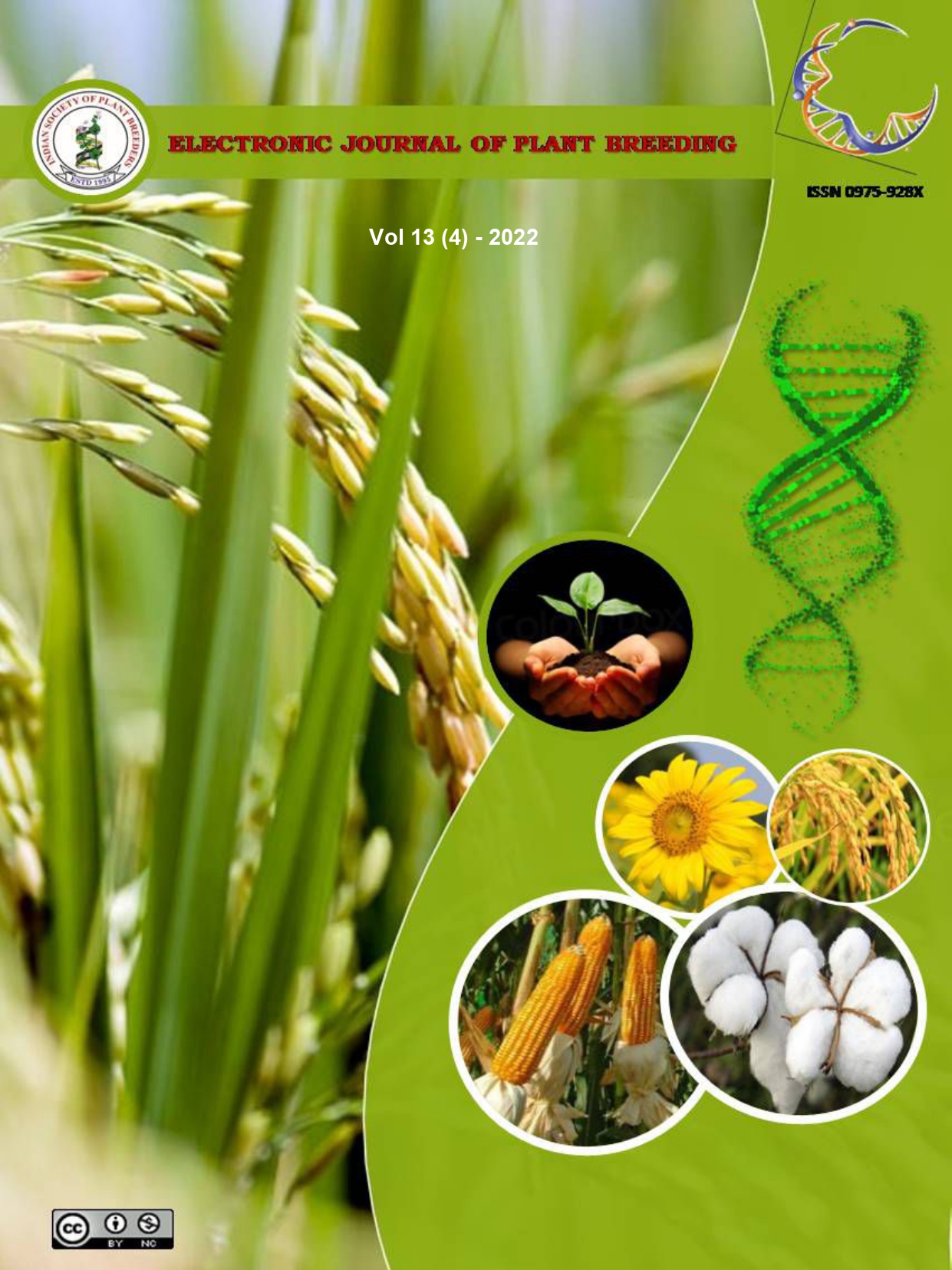Interpreting genotype × environment interaction in greengram (Vigna radiata L. Wilczek) using Eberhart and Russell Model
Abstract
Fifty four genotypes of greengram were investigated under four different environments in a randomised block design with three replications during the year 2021. Eberhart and Russell’s model was carried out which revealed significant G × E interaction for all the traits, indicating the differential response of genotypes to changing environments. The linear and non-linear G × E components were significant for majority of the characters, suggesting the presence of both predictable and non-predictable components. The genotypes viz., VMG-66, VMG-39, VMG-79, VMG-97 and GM 6 were found to be stable and high yielding across the environments. These genotypes were also found stable for two or three other yield contributing component traits. It can be inferred from the stability analysis that none of the genotype was noticed to be ideal with greater adaptability for all the characters.

